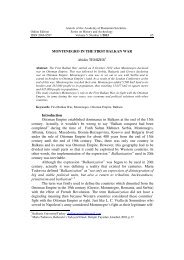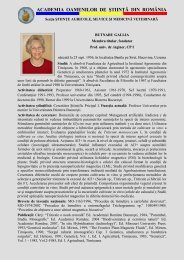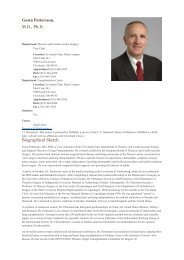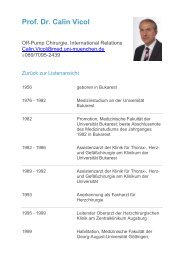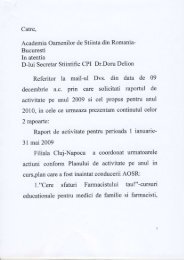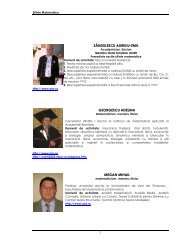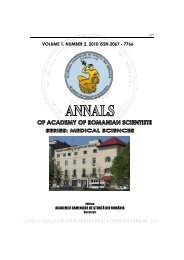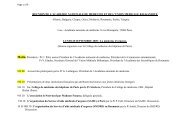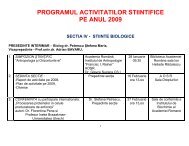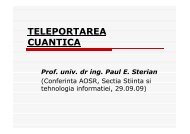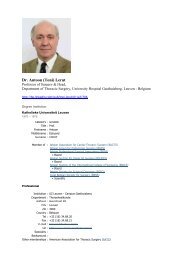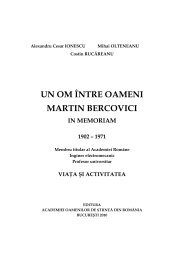Volume 3 nr 1 / 2011 - Academia Oamenilor de Stiinta din Romania
Volume 3 nr 1 / 2011 - Academia Oamenilor de Stiinta din Romania
Volume 3 nr 1 / 2011 - Academia Oamenilor de Stiinta din Romania
- No tags were found...
Create successful ePaper yourself
Turn your PDF publications into a flip-book with our unique Google optimized e-Paper software.
68 Constantin Radu2. DefinitionsSince there is a single coor<strong>din</strong>ator in the world, there is no single <strong>de</strong>finitionappropriated by professionals worldwi<strong>de</strong>. Most accept that the world scientific world"Networks / Network Intelligence" comes from the English words Smart Grids / Grid.The term began to be wi<strong>de</strong>ly used from 2003 to 2005 in the U.S. and Europe.Whatever the <strong>de</strong>finition used, an intelligent network inclu<strong>de</strong>s an interactivesystem for monitoring and controlling real-time production chain - final energyconsumption, using a computer network and bidirectional communications an<strong>din</strong>troduces the latest technologies (superconductivity, RES integration, useautomation expert systems, diagnosis and management of energy facilities, the useof intelligent electronic <strong>de</strong>vices for the load curve flattening and tariff choice).Currently, Network Intelligence is <strong>de</strong>fined as a set of management control systemsand electrical networks, sensors and means of communication and information,which incorporates elements of both traditional and next generation. It combineselements of software and hardware <strong>de</strong>signed to dramatically improve the way it isrun / operated system inclu<strong>din</strong>g the electric current at low voltage to the highestand allow real time interaction between entities interested in the final productionconsumptionchain.3. Expectations of the intelligent networkIn accordance with the laws and regulations issued since 2003 in the U.S.intelligence network must meet mainly the following:- the self and to be able to prevent damage;- to motivate consumers to participate interactively in the network (two-waycommunication between consumers and energy entities);- to withstand the physical and cyber attacks;- reduce the number of interruptions to supply electricity and observing all qualityparameters imposed by standards and regulations;- to allow their gradual integration into existing networks / classical- to bring such advantages as the electricity market and to <strong>de</strong>velop medium andlong term electricity price to <strong>de</strong>cline;- to allow connection to all types of RES (inclu<strong>din</strong>g virtual manufacturing plants);- to ensure an efficient operation by:a) integration of next generation communications to enable real-timecontrol network;b) connecting the synchronicity of all types of generators using varioustypes of sensors and synchronic phase / angle;c) introducing performance components to reduce losses in electricnetworks (superconductivity introduction, the use of composite conductors, toCopyright © Editura Aca<strong>de</strong>miei <strong>Oamenilor</strong> <strong>de</strong> Știință <strong>din</strong> România, <strong>2011</strong>Watermark Protected



